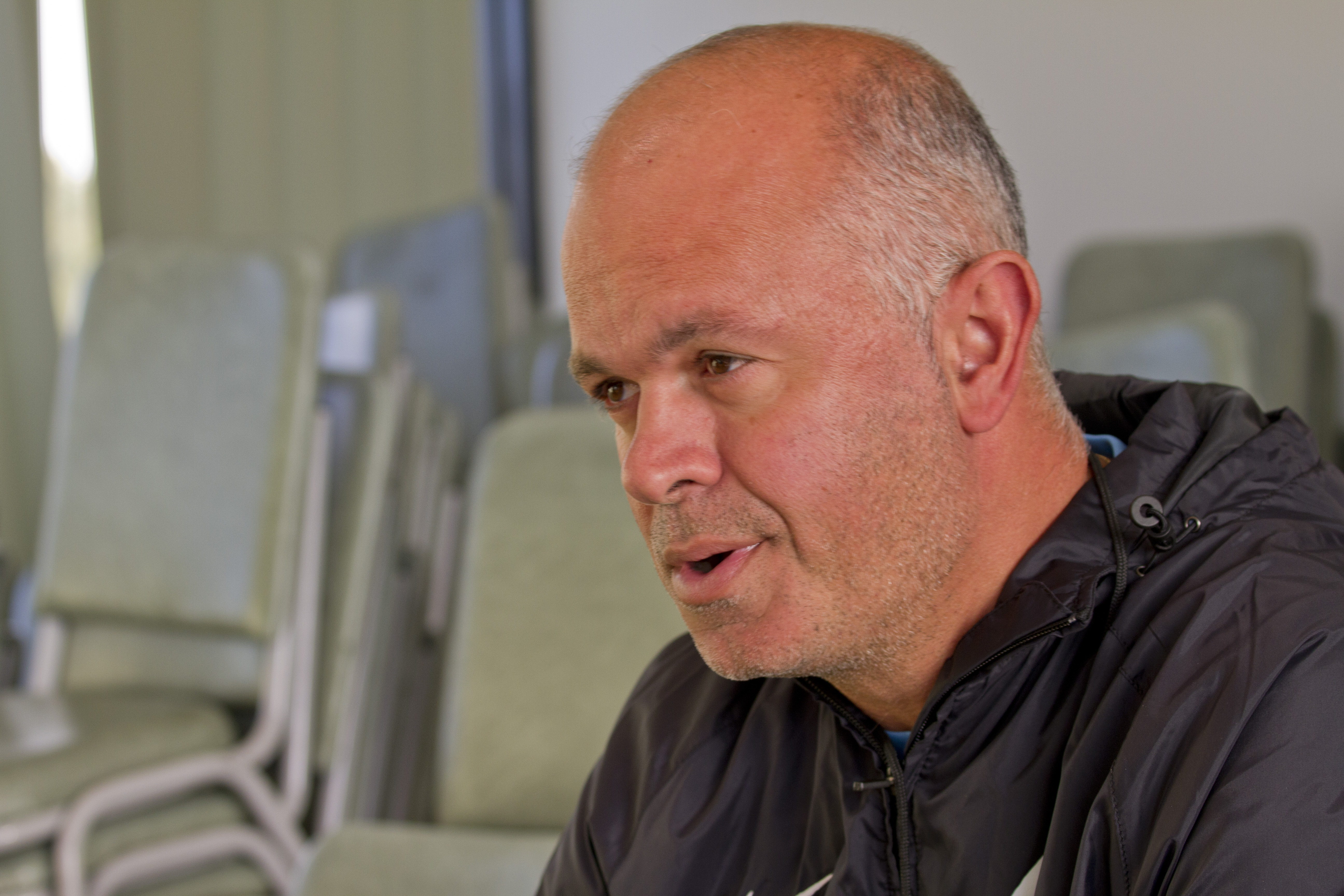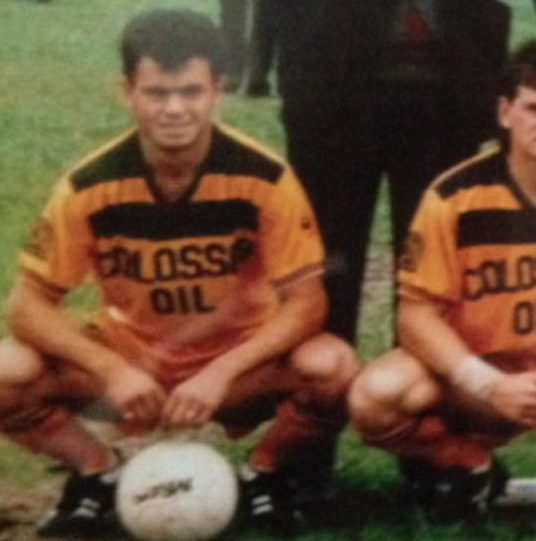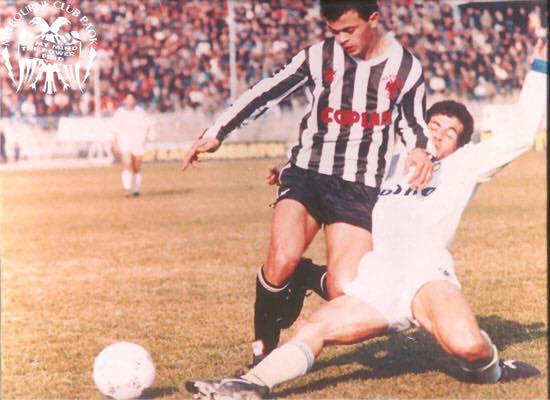He was a member of the 1987 Young Socceroos World Cup squad, spent nine seasons playing regular football in one of Europe’s top leagues, won two NSL Championships (one of which included a memorable extra-time winner), and to this day is the only Australian to have scored at Brazil’s Maracana Stadium.
John Anastasiadis may just be one of the greatest Australian players not to have represented the Socceroos.
His playing career took him from suburban Melbourne to Thessaloniki and back to Melbourne, including a memorable trip to Rio de Janeiro. Today, he is one of the best and most respected Australian coaches outside the A-League, grooming the next generation of local talent.
The beginning
Anastasiadis’ journey to football stardom began in 1968 when he was born to Greek working class migrants in the Victorian capital. Residing in the suburb of Gladstone Park, his first junior club as a nine-year-old was the newly-formed Meadow Park. John’s younger brother Dean also joined, but at just 14, the older Anastasiadis moved to Footscray. Three years in the NSL club’s junior system were followed by a move to the reserves of childhood club Heidelberg United, the team John’s father took his sons to watch when they were younger.
“We developed an affection towards the club,” Anastasiadis recalls.
“We used to love Heidelberg. It was a great day out, good crowds against any team we played, especially the big derbies against South Melbourne which had just as much passion – if not more – than the Victory City games of today.”
After one year with the reserves, Anastasiadis was called up into the senior team for the 1987 NSL season. Featuring in a side with Jeff Olver, Lawrie McKinna, Alan Hunter and Peter Tsolakis, the 18-year-old was one of the few shining lights for a Heidelberg side which was relegated from the competition at the end of the campaign.
Anastasiadis’ form in the top flight earnt him a call up for the Young Socceroos squad that travelled to Chile for the 1987 FIFA World Youth Championships (now FIFA Under 20 World Cup). Along with the likes of Alistair Edwards, John Markovski and good friend Paul Trimboli, the Young Socceroos defeated Togo 2-0 in their group stage opener. A 4-0 loss to eventual champions Yugoslavia – which included future stars Robert Prosinecki, Zvonimir Boban, Davor Suker and Peja Mijatovic – followed, a team which Anastasiadis described as “one of the best he played against”. The result meant the final group clash was a winner-takes-all occasion against the hosts, which Les Scheinflug’s men lost 2-0 in front of 75,000 boisterous Chilean fans at the infamous Estadio Nacional in Santiago.
Upon his return to Australia, John was one of Heidelberg’s leading players in their attempts to earn back promotion into the NSL. One of his coaches at Heidelberg, John Margaritis happened to be a close friend of the PAOK president at the time, who sent a scout to Australia to watch Anastasiadis.
Greece
Impressed with his performance despite a goalless encounter against fellow promotion chasers St Albans, the Greek giants took a punt on the Australian teen and offered him a multi-year deal. Nine years in Thessaloniki saw Anastasiadis feature in 203 Greek League fixtures, a period he describes as, “not a successful era for the club at all”.
“We had a lot of internal problems as forever we were trying to fight and beat Panathinaikos and Olympiacos during those years instead of focusing on ourselves,” Anastasiadis says.
“The club went and bought foreigners who were not up to scratch at the time.
“The president lost a lot of interest once we were banned from European football for four years for crowd disturbances at our game against Paris Saint-Germain. That crippled the club financially and at the end the president did not care because he was not going to stand for the supporters destroying the dream and that reflected in the team and our performances at the time.”
Despite the setbacks, frequent European football early in his tenure did see Anastasiadis line up against the likes of Napoli, Sevilla and PSG, coming face-to-face with legendary players Diego Maradona, Toni Polster, George Weah and David Ginola. Even in his own dressing room, Anastasiadis was surrounded by esteemed company, including Greece’s Euro 2004 winning captain Theodoras Zagorakis and fellow squad member Zisis Vryzas.
On the pitch, Anastasiadis recalls playing big domestic games in Greece football against the Athens trio (Olympiacos, Panathinaikos and AEK Athens) as, “massive games featuring massive passion and at times it was scary how big it all was”.
“Greek people in general are passionate people and sometimes their passion overwhelmed everyone, and in the end you were not watching the games but rather what was happening in the stands,” he says.
“Those games are hard to forget. We had some good games and then some bad games against the Athens trio, especially at home where we had considerable success.”
Anastasiadis also laments at the plight of PAOK’s city rivals Aris, who are now languishing in the third division of Greek football, reflecting on the Thessaloniki derby back in his time as being “passionate encounters”.
Accompanying some of the great names Anastasiadis played with on the field were legendary managers he also learnt from. Miroslav ‘Ciro’ Blazevic, who later guided a newly independent Croatia to third place at the 1998 World Cup, coached the striker during the 1991/92 season. Anastasiadis describes him as a having an “incredible personality with this transcending onto us the players during the game so that when we played, we did so with his manner”. Under Blazevic, PAOK sensationally knocked out the ambitious and big-spending Belgian side Mechelen – who at the time had spent $10 million on their squad – in the First Round of the UEFA Cup, a victory that Anastasiadis says “crippled the Belgian side to the point where they have never recovered”.
Despite some success with the club, ‘Ciro’ made way for Ljupko Petrovic, who had a year earlier coached Red Star Belgrade to a European Cup, in the process becoming one of only two Eastern European clubs to have won the continent’s most coveted trophy.
“His knowledge of the game was unbelievable,” Anastasiadis says, though he also admits that at the time he was more focused on playing regular minutes rather than learning off the coaches. It was only when Soviet football legend and former Ukraine manager Oleh Blokhin took over as manager in 1993 that Anastasiadis started understanding football more from a tactical viewpoint, adding that he “took a lot of things out” of the 1975 Ballon d’Or winner.
But of all the coaches the striker played under at PAOK, Anastasiadis attributes Dutchman Arie Haan – who in the 1970s featured for the Netherlands alongside Cryuff and co. – as having been his most influential teacher.
“He was very passionate about the game and had about twenty different starting eleven formations that he would draw up prior to a game,” he describes.



